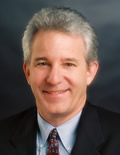A Placemaking Journal
My Right Turn at the Intersection of Good Ideas
When things get tough, people start digging in ideologically, increasingly viewing the world through the lens of their own experiences to fortify their already entrenched positions.
Yes, experience counts for a lot and, chances are, they do hold some piece of the larger solution. But as we’ve learned time and time again, things are never that simple. There are no magic bullets.
Answers typically turn up where perspectives intersect.
I was reminded of this fact again recently, which left me even more confident (if that’s possible) that I’ve developed a valuable and viable model for addressing the issue of San Diego, and places like it, grappling with the uncertain future of growth, development and community sustainability.
Setting the context, this is what Bill Fulton, preeminent planner / writer / Mayor of Ventura, writes and thinks about the state of California planning today:

“The entire planning business in California is changing, and I cannot quite predict where we are headed. So many of the conditions we have lived with for the past generation or two are changing. Real estate development is flat and we can’t predict when the market’s coming back, meaning we can’t use development to leverage needed change in our communities – nor use developer money to fund our practices. Local government revenue is flat and probably going down – meaning advance planning in California is extremely dependent right now on state and federal money, which could dry up anytime. And, of course, nobody knows what’s going to happen with redevelopment in the long run. Cities are on the verge of bankruptcy, planning departments are being rolled up, and planners are out on the street.
In the short run, all these things are harmful to the profession and to California’s communities as well. But it’s possible that some kind of shakeout and rethinking of how planning works in this state is long overdue. Maybe we’ve become too dependent on the same ol’-same ol’ – tax-increment funds, developer impact fees, and so forth. Maybe it’s time to find a new model – one where the local governments play a smaller or at least different role, and developers and nonprofit organizations play a bigger one.”
No argument there. And look where it fits with this NGO model presented by architect Teddy Cruz:

“Our projects primarily engage the micro scale of the neighborhood, transforming it into the urban laboratory of the 21st century. The forces of control at play across the most trafficked checkpoint in the world has provoked the small border neighborhoods that surround it to construct alternative urbanisms of transgression that infiltrate themselves beyond the property line in the form of non-conforming spatial and entrepreneurial practices. A migrant, small scale activism that alters the rigidity of discriminatory urban planning of the American metropolis, and search for new modes of social sustainability and affordability. The political and economic processes behind this social activism bring new meaning to the role of the informal in the contemporary city. What is interesting here is not the ‘image’ of the informal but the instrumentality of its operational socio-economic and political procedures. The counter economic and social organizational practices produced by non-profit social service organizations (turned micro-developers of alternative housing prototypes and public infrastructure at the scale of the parcel) within these neighborhoods are creating alternative sites of negotiation and collaboration. They effectively search to transform top-down legislature and lending structures, in order to generate a new brand of bottom-up social and economic justice that can bridge the political equator.”
An interesting convergence. Now allow me to add my ‘Community Character Corner‘ synopsis, which heroically attempts to bridge the brilliant points of both these perspectives together:
“Due to our governor’s pilfering in combination with our citizens’ general fear and loathing of condemnation, redevelopment has gone gently into that goodnight. In complete disarray, our local government now embodies Einstein’s definition of insanity by using the same suburban tools over and over again and expecting more urban results. Today, our General Services department builds civic buildings; Parks and Recreation builds our civic spaces; Public Works builds our streets; and now, with the demise of planning, code enforcement governs private development. This separation and segregation of responsibilities and decisions makes the simple act of rebuilding a place a mayoral decision. Couple this with the segregating practices of conventional Land Use planning and, viola!, our city has self-imposed a moratorium on small-scale, incremental building. Because it is just as difficult to do small-scale development as it is to large-scale, most new mega-projects are built strictly for economic value, which is out-of-scale and character with the surrounding neighborhood’s context, perpetuating said fear and loathing.
Community character is difficult to describe, but we know it when we see it. And, we see physical expressions of a place’s character in its underlying urban patterns (from a classical to vernacular spectrum – formal to informal public streets, and civic spaces with private block patterns), as well as in our architectural patterns (again, classical to vernacular spectrum of public and private buildings). Analyzing, understanding and applying these patterns, designers and city staffers, in collaboration with local citizens’ expressed memories and expectations, are now able to build/allow for new development that reinforces a local place’s character, social capital, and value. By building towards social and cultural value we are able to create tremendous economic value, neighborhood center-by-neighborhood center. In San Diego, this is understood as ‘The Balboa Park Effect.'”
Want to see how it could work? Check out this previous post.
–Howard Blackson







